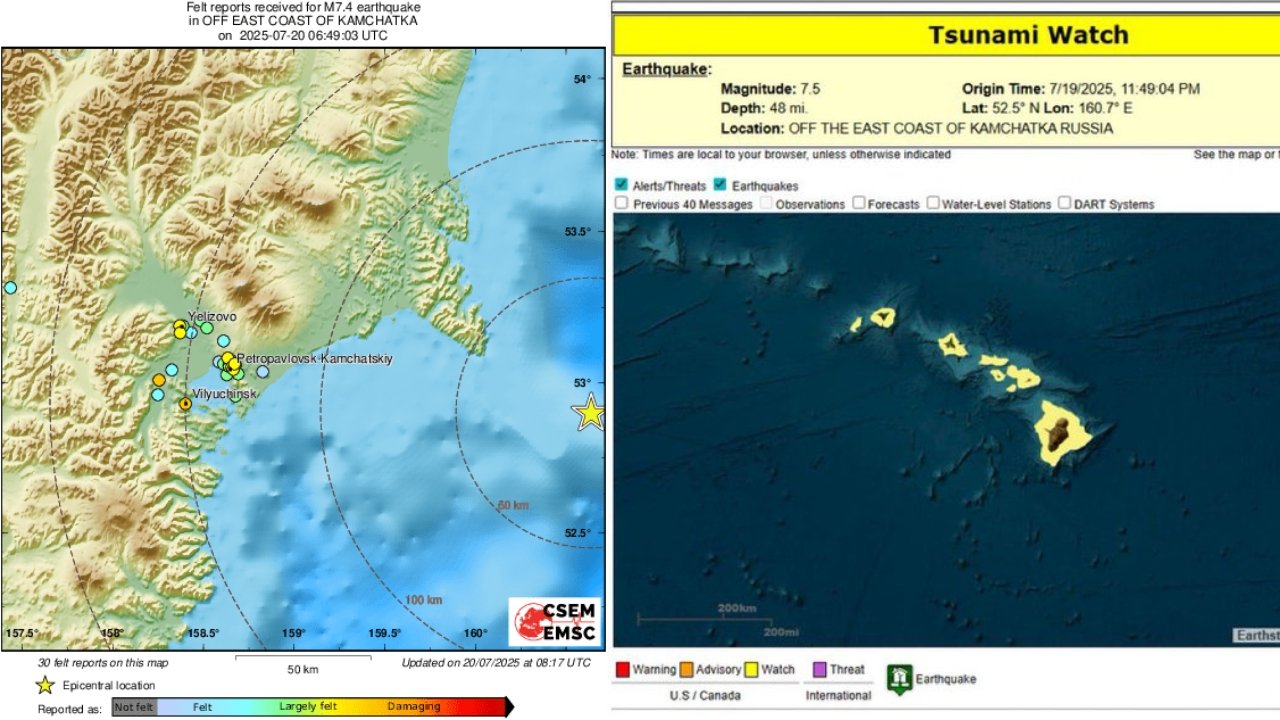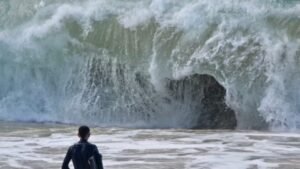Recent Tsunami Watch Updates: A Global Overview of 2025
In 2025, several significant seismic events triggered tsunami watches and warnings across the globe, highlighting the ongoing need for robust early warning systems and disaster preparedness. From the Pacific to the Indian Ocean, these events have underscored the destructive potential of tsunamis and the importance of timely alerts. Below is a comprehensive update on recent tsunami watches, drawing from reports by the U.S. Tsunami Warning Centers, the Japan Meteorological Agency, and other authoritative sources.
Tsunami Watch in Hawaii Following 7.5-Magnitude Earthquake
On July 20, 2025, a powerful 7.5-magnitude earthquake struck off the coast of Hawaii, prompting the U.S. National Tsunami Warning Center to issue a tsunami watch for the Hawaiian archipelago. The quake occurred at a depth of 15 miles, centered off the east coast of Kamchatka, Russia, with effects felt across the Pacific. According to posts on X by meteorologist Matthew Cappucci, the tsunami watch was canceled by 9:42 p.m. HST after updated modeling indicated no significant threat to Hawaii. No major damage or injuries were reported, but the event caused temporary disruptions as residents prepared for potential coastal impacts.
Alaska Tsunami Advisory After 7.3-Magnitude Quake
On July 17, 2025, a 7.3-magnitude earthquake off the Alaskan coast triggered a tsunami advisory for parts of the state. The U.S. National Tsunami Warning Center reported that sirens were activated, and water receding from the shore signaled a potential incoming surge. The advisory remained in effect until further assessments confirmed no widespread inundation was expected. This event highlighted Alaska’s vulnerability to tsunamis, given its proximity to active seismic zones like the Chignik earthquake region, which saw an 8.2-magnitude quake in 2021.
California Tsunami Warning After 7.0-Magnitude Earthquake
On December 5, 2024, a 7.0-magnitude earthquake struck near the Mendocino Triple Junction off Northern California’s coast, one of the state’s most seismically active regions. The U.S. Geological Survey (USGS) and the National Tsunami Warning Center issued a tsunami warning for parts of the San Francisco Bay Area and coastal regions. The warning was lifted after assessments showed no significant tsunami threat, though the quake caused minor disruptions. This event served as a reminder of the Cascadia Subduction Zone’s potential to generate massive tsunamis, with studies estimating a 15% chance of a magnitude 8.0+ earthquake in the region within the next 50 years.
Japan’s Tsunami Advisory Following 6.8-Magnitude Quake
On January 13, 2025, a 6.8-magnitude earthquake struck southwestern Japan in the Hyuga-Nada Sea, prompting the Japan Meteorological Agency to issue a tsunami advisory. Two small tsunamis were observed, but no significant damage was reported. Japan, still marked by the memory of the 2011 Fukushima disaster, maintains a robust tsunami warning system. The country’s proactive measures were evident in the swift issuance of the advisory, which was later lifted after confirming minimal risk.

Southern Chile and Argentina: 7.5-Magnitude Earthquake
On February 8, 2025, a 7.5-magnitude earthquake in the Drake Passage off the coast of South America led to a tsunami warning for southern Chile and Argentina. Authorities ordered evacuations in low-lying coastal areas as a precautionary measure. The warning was downgraded after assessments indicated no major tsunami threat, but the event underscored the region’s exposure to seismic risks, particularly in areas near Antarctica.
Global Context and Advances in Tsunami Preparedness
The frequency of tsunami watches in 2025 reflects the heightened seismic activity in the Pacific Ocean, where 76% of the world’s fatal tsunamis have historically occurred. The Pacific Tsunami Warning System, coordinated by UNESCO’s Intergovernmental Oceanographic Commission, has improved significantly since the 2004 Indian Ocean tsunami, which killed over 230,000 people. Today, over 75% of coastal communities in high-risk areas have access to early warning systems, compared to just 25% in 2004.
A notable event in 2023, documented in 2025, involved a nine-day seismic signal caused by mega-tsunamis in East Greenland’s Dickson Fjord. Triggered by climate-change-induced glacier melting and landslides, these 650-foot waves sent seismic waves globally, highlighting the emerging role of climate change in tsunami generation. New satellite technologies, such as those used to track these waves, are enhancing our ability to monitor such events in remote regions.
Conclusion
The tsunami watches and warnings of 2025 demonstrate the critical role of early warning systems in mitigating risks from seismic events. While most recent watches were canceled or downgraded, the potential for devastating tsunamis remains, particularly in seismically active regions like the Pacific Rim. Continued investment in global tsunami monitoring, as seen in initiatives like the Indian Ocean Tsunami Warning and Mitigation System and the Tsunami Ready Programme, is essential to safeguarding vulnerable communities. As climate change introduces new triggers for tsunamis, such as glacial melting, the global community must remain vigilant and adaptive to emerging threats.














Post Comment